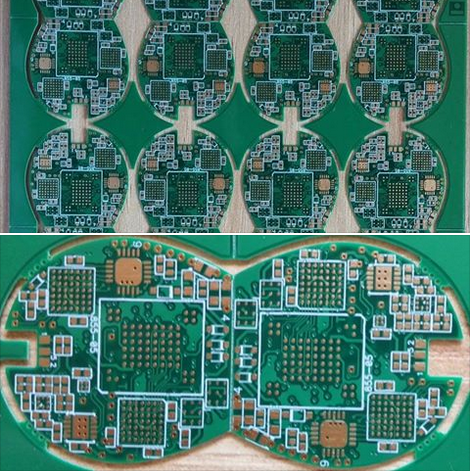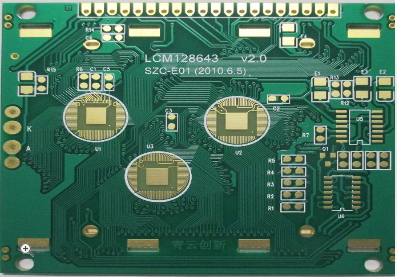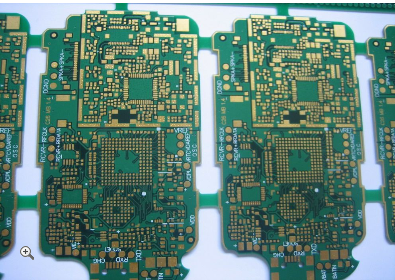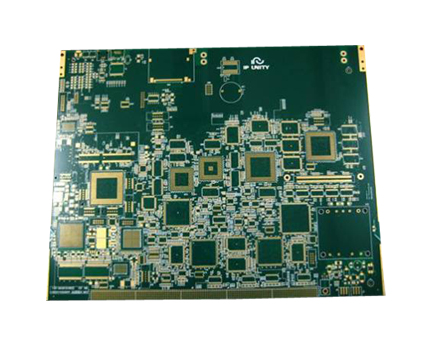-
 Agriculture
Agriculture
-
 Health-Care
Health-Care
-
 Environment
Environment
-
 Construction-Real-Estate
Construction-Real-Estate
-
 Tools-Hardware
Tools-Hardware
-
 Home-Garden
Home-Garden
-
 Furniture
Furniture
-
 Luggage-Bags-Cases
Luggage-Bags-Cases
-
 Medical-devices-Supplies
Medical-devices-Supplies
-
 Gifts-Crafts
Gifts-Crafts
-
 Sports-Entertainment
Sports-Entertainment
-
 Food-Beverage
Food-Beverage
-
 Vehicles-Transportation
Vehicles-Transportation
-
 Power-Transmission
Power-Transmission
-
 Material-Handling
Material-Handling
-
 Renewable-Energy
Renewable-Energy
-
 Safety
Safety
-
 Testing-Instrument-Equipment
Testing-Instrument-Equipment
-
 Construction-Building-Machinery
Construction-Building-Machinery
-
 Pet-Supplies
Pet-Supplies
-
 Personal-Care-Household-Cleaning
Personal-Care-Household-Cleaning
-
 Vehicle-Accessories-Electronics-Tools
Vehicle-Accessories-Electronics-Tools
-
 School-Office-Supplies
School-Office-Supplies
-
 Packaging-Printing
Packaging-Printing
-
 Mother-Kids-Toys
Mother-Kids-Toys
-
 Business-Services
Business-Services
-
 Commercial-Equipment-Machinery
Commercial-Equipment-Machinery
-
 Apparel-Accessories
Apparel-Accessories
-
 Security
Security
-
 Shoes-Accessories
Shoes-Accessories
-
 Vehicle-Parts-Accessories
Vehicle-Parts-Accessories
-
 Jewelry-Eyewear-Watches-Accessories
Jewelry-Eyewear-Watches-Accessories
-
 Lights-Lighting
Lights-Lighting
-
 Fabric-Textile-Raw-Material
Fabric-Textile-Raw-Material
-
 Fabrication-Services
Fabrication-Services
-
 Industrial-Machinery
Industrial-Machinery
-
 Consumer-Electronics
Consumer-Electronics
-
 Electrical-Equipment-Supplies
Electrical-Equipment-Supplies
-
 Electronic-Components-Accessories-Telecommunications
Electronic-Components-Accessories-Telecommunications
-
 Home-Appliances
Home-Appliances
-
 Beauty
Beauty
-
 Chemicals
Chemicals
-
 Rubber-Plastics
Rubber-Plastics
-
 Metals-Alloys
Metals-Alloys
- Masonry Materials
- Curtain Walls & Accessories
- Earthwork Products
- Fireproofing Materials
- Heat Insulation Materials
- Plastic Building Materials
- Building Boards
- Soundproofing Materials
- Timber
- Waterproofing Materials
- Balustrades & Handrails
- Bathroom & Kitchen
- Flooring & Accessories
- Tiles & Accessories
- Door, Window & Accessories
- Fireplaces & Stoves
- Floor Heating Systems & Parts
- Stairs & Stair Parts
- Ceilings
- Elevators & Escalators
- Stone
- Countertops, Vanity Tops & Table Tops
- Mosaics
- Metal Building Materials
- Multifunctional Materials
- Ladders & Scaffoldings
- Mouldings
- Corner Guards
- Decorative Films
- Formwork
- Building & Industrial Glass
- Other Construction & Real Estate
- Wallpapers/Wall panels
- HVAC System & Parts
- Outdoor Facilities
- Prefabricated Buildings
- Festive & Party Supplies
- Bathroom Products
- Household Sundries
- Rain Gear
- Garden Supplies
- Household Cleaning Tools & Accessories
- Lighters & Smoking Accessories
- Home Storage & Organization
- Household Scales
- Smart Home Improvement
- Home Textiles
- Kitchenware
- Drinkware & Accessories
- Dinnerware, Coffee & Wine
- Home Decor
- Golf
- Fitness & Body Building
- Amusement Park Facilities
- Billiards, Board Game,Coin Operated Games
- Musical Instruments
- Outdoor Affordable Luxury Sports
- Camping & Hiking
- Fishing
- Sports Safety&Rehabilitation
- Ball Sports Equipments
- Water Sports
- Winter Sports
- Luxury Travel Equipments
- Sports Shoes, Bags & Accessories
- Cycling
- Other Sports & Entertainment Products
- Artificial Grass&Sports Flooring&Sports Court Equipment
- Scooters
- Food Ingredients
- Honey & Honey Products
- Snacks
- Nuts & Kernels
- Seafood
- Plant & Animal Oil
- Beverages
- Fruit & Vegetable Products
- Frog & Escargot
- Bean Products
- Egg Products
- Dairy Products
- Seasonings & Condiments
- Canned Food
- Instant Food
- Baked Goods
- Other Food & Beverage
- Meat & Poultry
- Confectionery
- Grain Products
- Feminie Care
- Hair Care & Styling
- Body Care
- Hands & Feet Care
- Hygiene Products
- Men's Grooming
- Laundry Cleaning Supplies
- Travel Size & Gift Sets
- Room Deodorizers
- Other Personal Care Products
- Pest Control Products
- Special Household Cleaning
- Floor Cleaning
- Kitchen & Bathroom Cleaning
- Oral Care
- Bath Supplies
- Yellow Pages
- Correction Supplies
- Office Binding Supplies
- Office Cutting Supplies
- Board Erasers
- Office Adhesives & Tapes
- Education Supplies
- Pencil Cases & Bags
- Notebooks & Writing Pads
- File Folder Accessories
- Calendars
- Writing Accessories
- Commercial Office Supplies
- Pencil Sharpeners
- Pens
- Letter Pad/Paper
- Paper Envelopes
- Desk Organizers
- Pencils
- Markers & Highlighters
- Filing Products
- Art Supplies
- Easels
- Badge Holder & Accessories
- Office Paper
- Printer Supplies
- Book Covers
- Other Office & School Supplies
- Stationery Set
- Boards
- Clipboards
- Stamps
- Drafting Supplies
- Stencils
- Electronic Dictionary
- Books
- Map
- Magazines
- Calculators
- Baby & Toddler Toys
- Educational Toys
- Classic Toys
- Dress Up & Pretend Play
- Toy Vehicle
- Stuffed Animals & Plush Toys
- Outdoor Toys & Structures
- Balloons & Accessories
- Baby Food
- Children's Clothing
- Baby Supplies & Products
- Maternity Clothes
- Kids Shoes
- Baby Care
- Novelty & Gag Toys
- Dolls & Accessories
- Puzzle & Games
- Blocks & Model Building Toys
- Toddler Clothing
- Baby Clothing
- Kids' Luggage & Bags
- Arts, Crafts & DIY Toys
- Action & Toy Figures
- Baby Appliances
- Hobbies & Models
- Remote Control Toys
- Promotional Toys
- Pregnancy & Maternity
- Hygiene Products
- Kid's Textile&Bedding
- Novelty & Special Use
- Toy Weapons
- Baby Gifts
- Baby Storage & Organization
- Auto Drive Systems
- ATV/UTV Parts & Accessories
- Marine Parts & Accessories
- Other Auto Parts
- Trailer Parts & Accessories
- Auto Transmission Systems
- Train Parts & Accessories
- Universal Parts
- Railway Parts & Accessories
- Auto Brake Systems
- Aviation Parts & Accessories
- Truck Parts & Accessories
- Auto Suspension Systems
- Auto Lighting Systems
- New Energy Vehicle Parts & Accessories
- Auto Steering Systems
- Wheels, Tires & Accessories
- Bus Parts & Accessories
- Auto Performance Parts
- Cooling System
- Go-Kart & Kart Racer Parts & Accessories
- Air Conditioning Systems
- Heavy Duty Vehicle Parts & Accessories
- Auto Electrical Systems
- Auto Body Systems
- Auto Engine Systems
- Container Parts & Accessories
- Motorcycle Parts & Accessories
- Refrigeration & Heat Exchange Equipment
- Machine Tool Equipment
- Food & Beverage Machinery
- Agricultural Machinery & Equipment
- Apparel & Textile Machinery
- Chemical Machinery
- Packaging Machines
- Paper Production Machinery
- Plastic & Rubber Processing Machinery
- Industrial Robots
- Electronic Products Machinery
- Metal & Metallurgy Machinery
- Woodworking Machinery
- Home Product Manufacturing Machinery
- Machinery Accessories
- Environmental Machinery
- Machinery Service
- Electrical Equipment Manufacturing Machinery
- Industrial Compressors & Parts
- Tobacco & Cigarette Machinery
- Production Line
- Used Industrial Machinery
- Electronics Production Machinery
- Other Machinery & Industrial Equipment
- Camera, Photo & Accessories
- Portable Audio, Video & Accessories
- Television, Home Audio, Video & Accessories
- Video Games & Accessories
- Mobile Phone & Accessories
- Electronic Publications
- Earphone & Headphone & Accessories
- Speakers & Accessories
- Smart Electronics
- TV Receivers & Accessories
- Mobile Phone & Computer Repair Parts
- Chargers, Batteries & Power Supplies
- Used Electronics
- VR, AR, MR Hardware & Software
- Projectors & Presentation Equipments
- Other Consumer Electronics
- Cables & Commonly Used Accessories
- Computer Hardware & Software
- Displays, Signage and Optoelectronics
- Discrete Semiconductors
- Wireless & IoT Module and Products
- Telecommunications
- Connectors, Terminals & Accessories
- Development Boards, Electronic Modules and Kits
- Circuit Protection
- Sensors
- Isolators
- Audio Components and Products
- Integrated Circuits
- Power Supplies
- Relays
- RF, Microwave and RFID
- Electronic Accessories & Supplies
- Passive Components
- PCB & PCBA
- Air Quality Appliances
- Home Appliance Parts
- Heating & Cooling Appliances
- Small Kitchen Appliances
- Laundry Appliances
- Water Heaters
- Water Treatment Appliances
- Refrigerators & Freezers
- Personal Care & Beauty Appliances
- Major Kitchen Appliances
- Cleaning Appliances
- Second-hand Appliances
- Smart Home Appliances
- Other Home Appliances
- Energy Chemicals
- Inorganic Chemicals
- Basic Organic Chemicals
- Agrochemicals
- Admixture & Additives
- Catalysts & Chemical Auxiliary Agents
- Pigments & Dyestuff
- Coating & Paint
- Daily Chemicals
- Polymer
- Organic Intermediate
- Adhesives & Sealants
- Chemical Waste
- Biological Chemical Products
- Surface Treatment Chemicals
- Painting & Coating
- Chemical Reagents
- Flavor & Fragrance
- Non-Explosive Demolition Agents
- Other Chemicals
- Custom Chemical Services
High Frequency PCB Innovations for Marine Navigation Radar System Integration
In the demanding world of maritime navigation, where safety and precision are paramount, radar systems serve as the electronic eyes of a vessel, cutting through fog, darkness, and adverse weather conditions. The relentless pursuit of greater accuracy, longer range, and enhanced target resolution has driven radar technology into the high-frequency spectrum, particularly the Ka-band and millimeter-wave (mmWave) frequencies. This evolution, however, presents significant engineering challenges, as traditional printed circuit boards (PCBs) are ill-equipped to handle the signal integrity and power demands at these frequencies. It is here that high-frequency PCB innovations become the critical enabler, transforming the capabilities of modern marine navigation radar systems. The integration of advanced materials, sophisticated design techniques, and precise manufacturing processes is not merely an improvement but a fundamental revolution, paving the way for more compact, reliable, and powerful radar solutions that are essential for the future of autonomous and safe maritime operations.
Advanced Dielectric Materials for Signal Integrity
The foundation of any high-frequency PCB lies in its dielectric substrate. For marine radar systems operating at frequencies like 24 GHz or 77 GHz, standard FR-4 materials are insufficient due to their high and inconsistent dielectric constant (Dk) and dissipation factor (Df). These inconsistencies lead to signal loss, phase distortion, and reduced system efficiency. Innovations in this area have focused on developing specialized laminates with tightly controlled electrical properties. Materials such as Rogers RO4000® series, Taconic RF-35, and PTFE-based composites offer low and stable Dk values, which are crucial for maintaining consistent impedance control across the entire board. Their low Df ensures minimal signal attenuation, allowing the radar's sensitive echoes to be transmitted and received with high fidelity over longer distances.
Furthermore, these advanced materials exhibit excellent thermal stability, a non-negotiable requirement in the harsh marine environment where temperature fluctuations are common. The coefficient of thermal expansion (CTE) of these substrates is engineered to match that of copper, preventing delamination and ensuring reliable plated through-hole (PTH) integrity over the product's lifetime. This material science innovation directly translates to a radar system that is not only more accurate but also significantly more robust and dependable, capable of performing consistently from the freezing Arctic to the sweltering tropics.
Precision Design and Manufacturing Techniques
Beyond the raw materials, the physical design and fabrication of the PCB are equally critical. At high frequencies, the PCB layout itself becomes part of the circuit, where every trace, via, and component pad influences performance. Innovations in computer-aided design (CAD) software now allow for sophisticated electromagnetic simulation prior to manufacturing. Engineers can model signal propagation, identify potential impedance mismatches, and optimize trace geometries to minimize parasitic capacitance and inductance. Controlled impedance routing is mandatory, with specific attention paid to the geometry of microstrip and stripline transmission lines to ensure they match the system's characteristic impedance, typically 50 ohms.
The manufacturing process has also seen remarkable advancements to meet the demands of high-frequency PCBs. Techniques such as laser drilling are used to create extremely small and precise microvias, which are essential for high-density interconnects (HDI) in compact radar modules. The surface finish is chosen not only for solderability but also for its high-frequency performance; finishes like Electroless Nickel Immersion Gold (ENIG) provide a smooth, reliable surface that minimizes signal loss at the skin effect-dominated high frequencies. The combination of precision design and state-of-the-art manufacturing ensures that the theoretical performance of the advanced materials is fully realized in the final product, resulting in a radar system with exceptional resolution and minimal noise.
Thermal Management and Reliability in Harsh Environments
Marine navigation radar systems are subjected to a uniquely challenging environment characterized by salt spray, high humidity, vibration, and wide temperature swings. High-frequency circuits, especially power amplifiers, generate significant heat that must be effectively dissipated to prevent performance degradation and premature failure. PCB innovations address this through sophisticated thermal management strategies. A key approach is the use of metal-core PCBs (MCPCBs) or insulated metal substrates (IMS), where a thermally conductive but electrically insulating layer is bonded to a metal baseplate, typically aluminum. This design efficiently draws heat away from critical components, ensuring stable operation.
Reliability is further enhanced through conformal coatings that protect the delicate circuit traces from moisture and corrosion. These coatings are specially formulated to be transparent to the radar's operating frequencies, preventing any adverse effects on signal transmission. The entire assembly process is governed by stringent quality control standards to ensure that the final product can withstand the rigors of the marine environment. This focus on ruggedization and thermal efficiency means that the advanced high-frequency radar PCB is not a delicate laboratory component but a hardened system ready for decades of service at sea, contributing directly to the vessel's operational safety.
Integration with Antenna Arrays and System Miniaturization
A major trend in modern radar is the move from large, mechanically rotating antennas to compact, solid-state electronic scanning systems. High-frequency PCB technology is at the heart of this transformation. Innovations like substrate-integrated waveguide (SIW) structures allow waveguides to be fabricated directly within the PCB layers, enabling the creation of low-loss, planar antenna arrays. These patch antenna arrays can be directly integrated onto the same PCB as the transmit/receive modules, leading to a highly integrated, compact front-end.
This level of integration drastically reduces the size, weight, and power consumption (SWaP) of the radar system—a crucial advantage for all vessels, from small recreational boats to large commercial ships where space is at a premium. The ability to package a powerful radar into a smaller dome or array makes installation easier and opens up new possibilities for multi-function systems. By consolidating multiple functions onto a single, sophisticated high-frequency PCB, manufacturers can deliver radar systems that are not only more powerful but also more versatile and easier to deploy, marking a significant leap forward in marine electronics integration.
REPORT































































































































































































































































































































































































































































































































































































